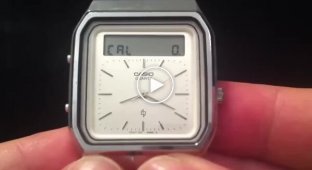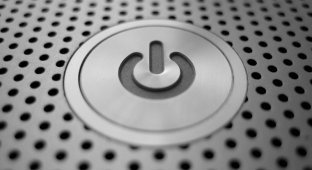Accounting! They Change the World for Themselves, and You Don't Even Notice It (6 photos + 1 video)
I'm sure that everyone here has used two things in their life: a calculator and a phone. And perhaps in the process they thought: why do they have such an order of numbers? Check it out yourself - zero seems to always be at the bottom and thank you for that. And what kind of addiction is happening to the rest of the numbers? Why do they go in completely different directions. On the calculator from the bottom up, and on the phone it's the other way around.
So let's take a closer look.
Why are the buttons arranged differently on the phone and calculator? 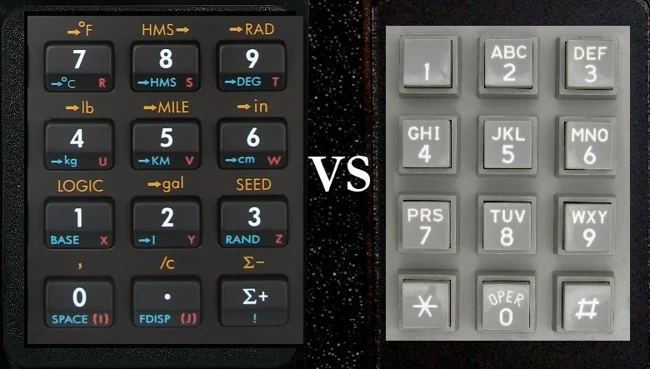
It would seem that these devices have the same functionality - to enter numbers... somewhere. But the ancestors of these mechanisms are completely different. The calculator has ancient counting machines. And the telephone layout... mmm... a telephone, what a surprise. Usually, in articles devoted to this topic, they claim that the ancestor of the calculator was the cash register, and that is why there is a frequently used 0 at the bottom. But in fact, this is not true. Early cash registers (before the 1890s) did not have a 0 button at all. Instead of numbers, they simply had dollar and cent values (from 5 to 95). Yeah, savages - they didn't have a value of 2 dollars and 24 cents before, only 2 dollars 25 cents (press 2, then .25). And everyone was happy with it. By the way, did you even know that the very first cash register was invented by the owner of the salon James Ritty, so that the sellers would not steal money? Now - I know.
And we will continue. 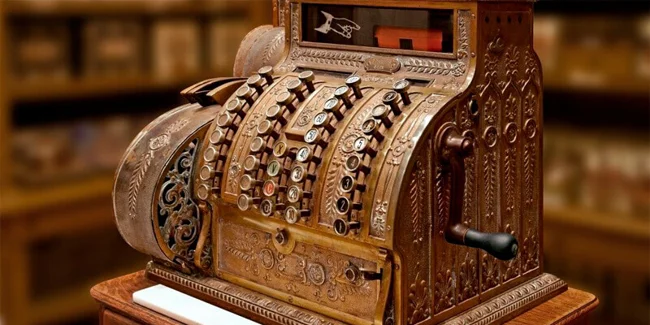
Where is the zero here? There is no zero!
The most distant ancestor of the calculator layout existed back in 1884 on the Comptometer machine (by the way, in the video below you can see how to work on this monster). And this mechanism had a strange layout - a mosaic of 9x10 buttons. All 9 digits in each column. At the top - 9, at the bottom - 1. The column is its own digit. And yes, there was no zero here either - it was implied that 0 is the key that was not pressed in its digit. Like wanted to dial the number 102, poke 1 in the column of hundreds, skip tens, units - press 2. Here you have 102. And now the question: why was the number 9 at the top, and 1 at the bottom?
All because the buttons inside the case were connected to a lever that ended in a gear and turned the drum with numbers. The smaller the value, the fewer teeth the gear had to be turned and the closer the button had to be to it. Here's a picture to help you understand how it was all arranged. 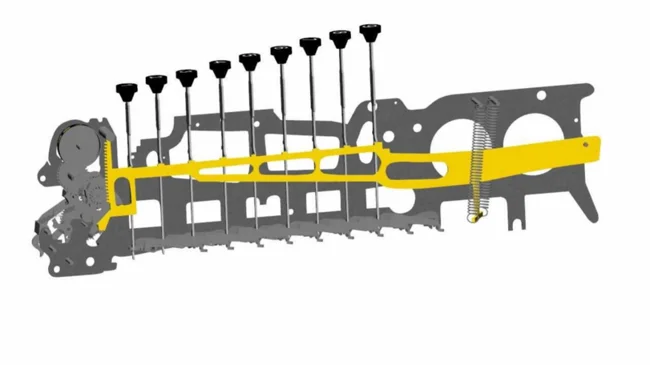
The second reason for this arrangement is that even in the manual for this hellish machine, to speed up the work, operators were instructed not to reach for large numbers, but to use their addends. For example, instead of 9, you could press 4 in the same digit, and then 5, which were closer to the operator. And the machine, they say, will add everything up itself. If 9 were at the bottom, then such a pleasant option would disappear.
Later, this arrangement of keys continued to improve, the number of buttons was reduced, but accountants had already accepted as a given that the smaller numbers were located at the bottom. And this became the standard for all calculating machines (and try to introduce something new in accounting, you will understand why they decided not to touch them). Soon, 0 appeared on such calculators and it was also located at the bottom - precisely because it was used quite often. Well, in 1914, David Sundstrand finally patented the layout we are familiar with for calculators. And it is still standard and familiar to many users.
Now the telephone 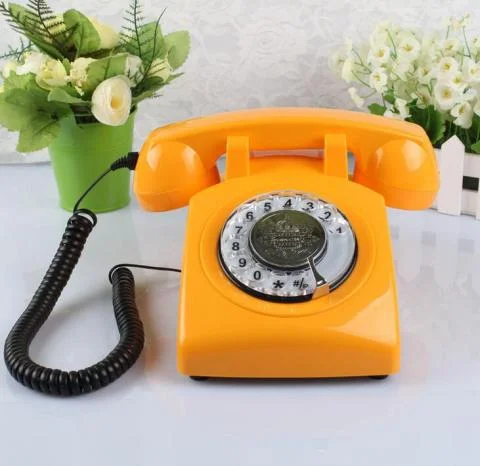
Modern children no longer know what pulse dialing with a disk is, but old-timers remember. There, the option "the higher the number, the more revolutions it had to make" worked again. But now the disk rotated from the bottom up, and therefore 9 (and at the same time 0, which sent 10 pulses) were at the bottom, and 1 - at the top of the disk. So far, everything was fine with everyone. However, in the late 1950s, Bell Labs, which was then the de facto standard for all telephone networks, decided that all telephony was at a dead end and the time had finally come for tone dialing. The number of devices in individual cities has increased excessively, the numbers have become longer, it took longer to turn the dials and, as a result, the number of errors when dialing has increased dramatically - fingers got tired. Plus, it became possible to call outside the cities, which means introducing phone codes for different settlements, and even more digits in the numbers.
By all indications, dials were already obsolete — people didn't want to pump their fingers and wind up kilometers. So, hello, buttons. And the developers approached the matter responsibly. They chose 15 different layouts and conducted numerous tests on volunteers to find the most convenient and familiar one for them. They collected a bunch of statistics — dialing speed, absence of errors, convenience for users, and similar things. 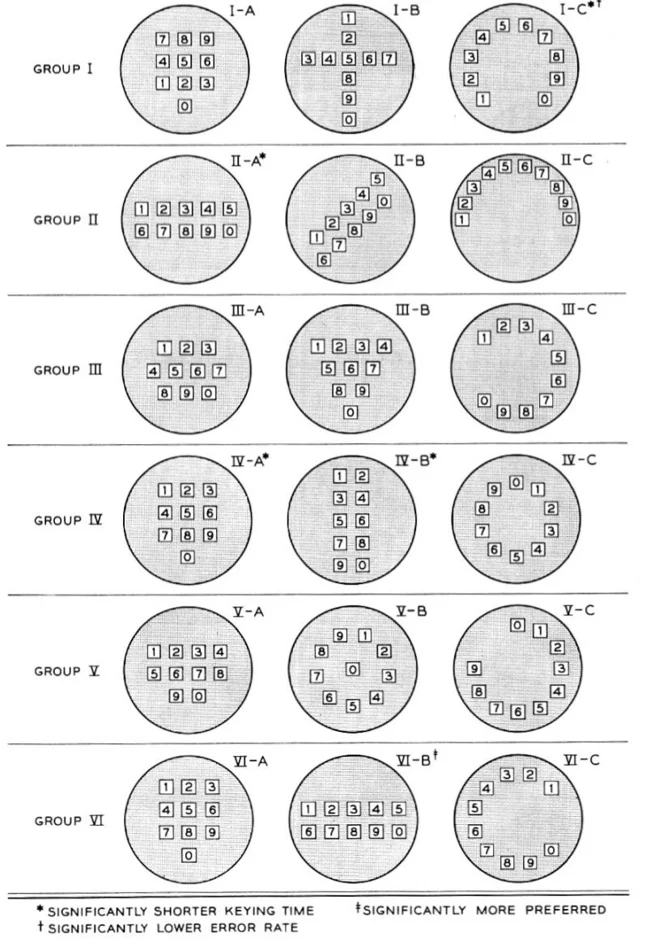
Layout options from the Bell Labs test report.
This layout turned out to be the familiar "1-2-3 at the top." Yes, some of the sample was rejected by the engineers themselves, and the designers didn't like something else. By the way, there is a legend that the "calculator" version was also among the leaders of this chart. Like - here standardization could have appeared and I would not have had to write this article. But it was not accepted for two reasons - it gave slightly more errors when dialing than the leader. And many "trained" accountants dialed numbers so quickly that some of the digits simply did not have time to be processed and send their tone. Naturally, it was necessary to make an adjustment for the fact that the number of accountants in the country is quite large, and therefore the layout was excluded from the shortlist.
That is, to summarize, everything that we see now is the ancestors of the mechanisms familiar to the target audience. Yes, at this stage it is possible to bring calculators and phones to uniformity, because the original reasons have long been gone, but ... people will not understand. It is like the story about the transition to the metric system in America. In short: "this is how it happened historically", but with nuances. 
What is the main idea in this story? Accounting! They change the world for themselves, and you don't even notice!












